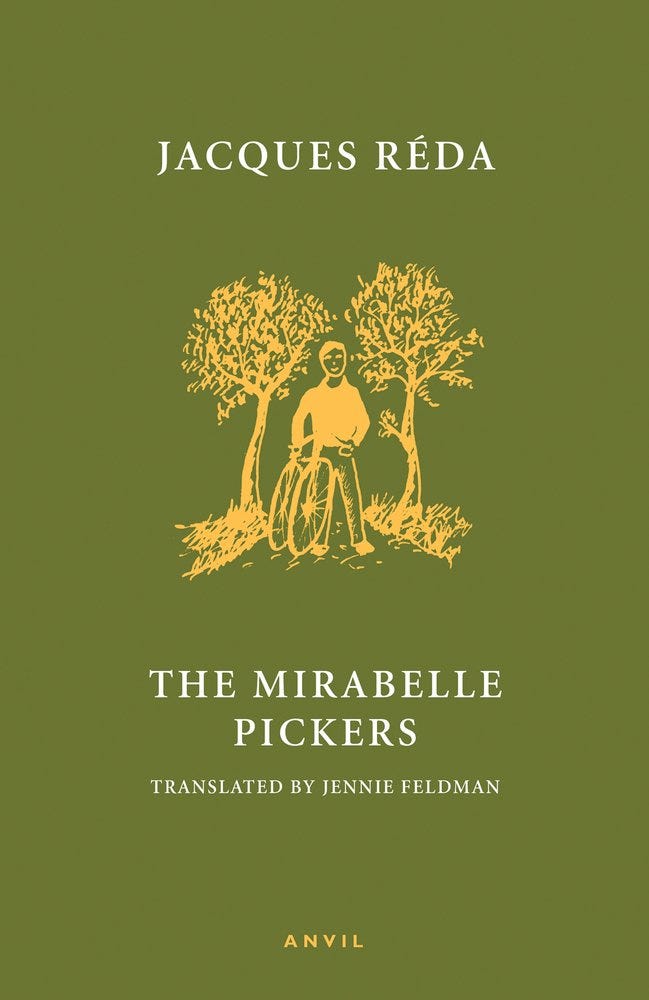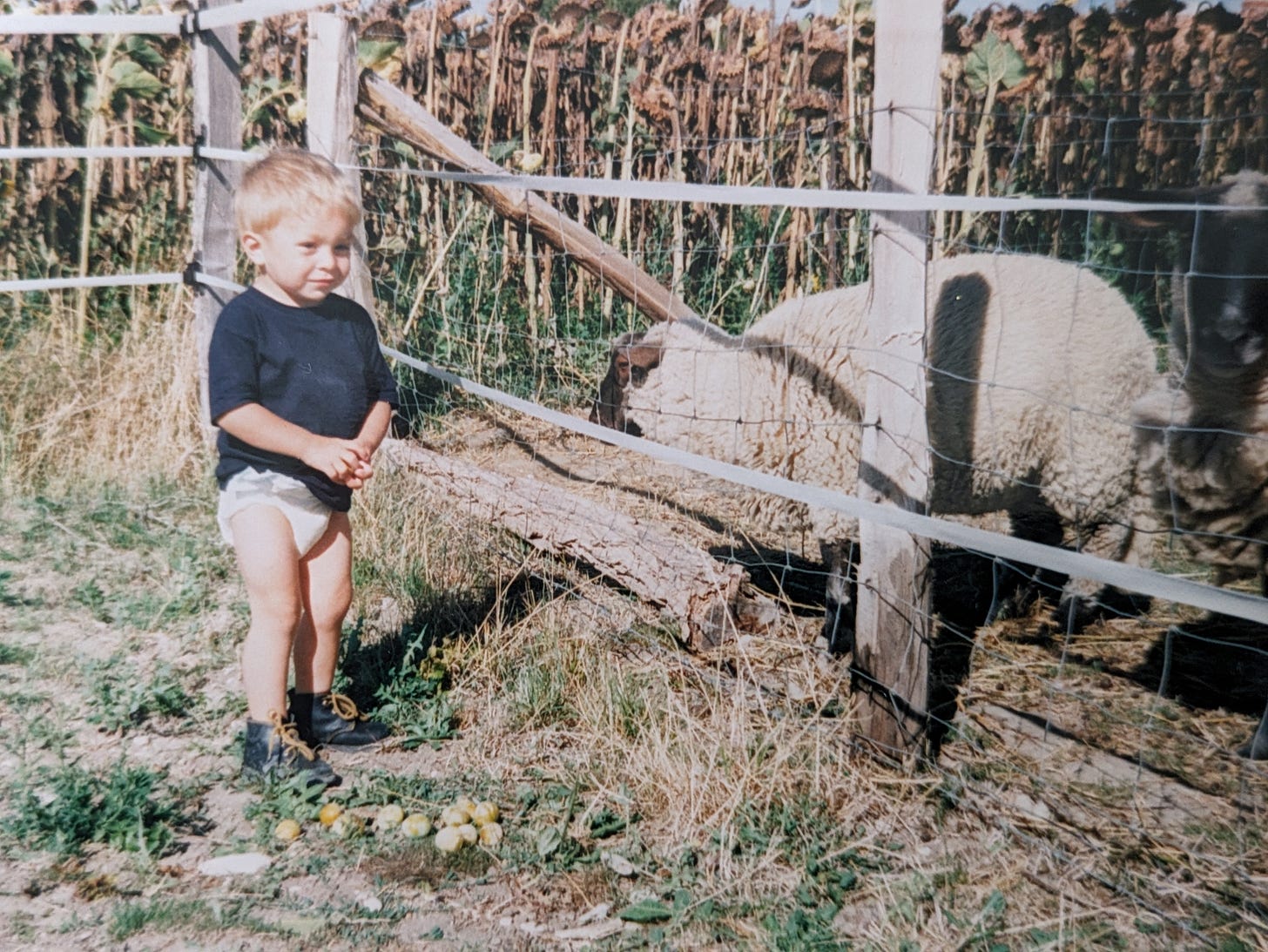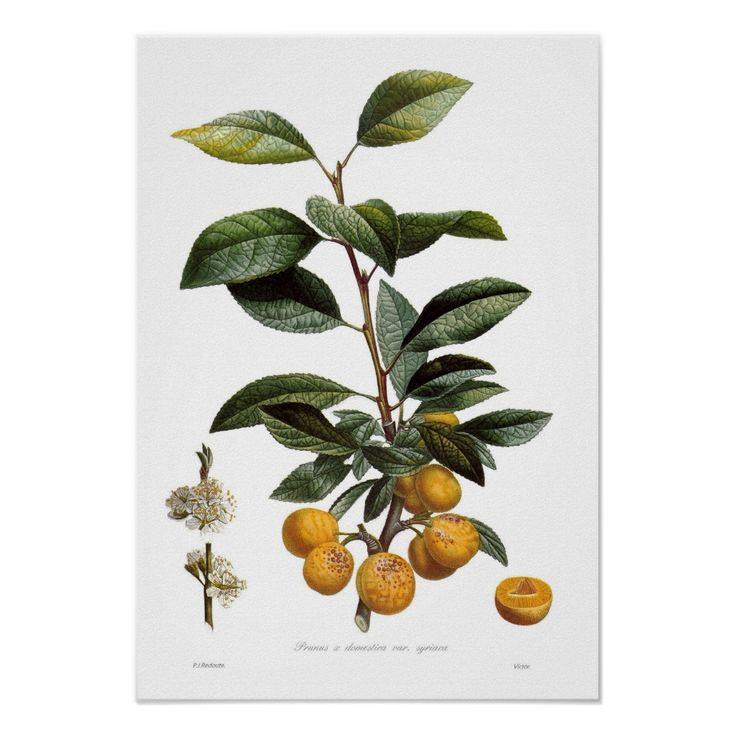Welcome to Tales From Topographic Kitchens. I’d love you to subscribe, and you can do this by clicking the button below.
In 'Aller Aux Mirabelles', Jacques Réda returns to the town of Luneville, where the wild cherry plums grew abundantly and where he was raised. To Réda, a cherry plum is one of life's small and significant things, punching its way through the ruins of twentieth-century reality. You may know them by another name: the Mirabelle plum. They remind him of "big blond smooth shiny pearls spotted with a few reddish freckles, and underneath their shininess, the pulp is dense like a chunk of mashed sun." Réda was observed by the pickers, who kept a wary eye out for scrumpers. Even the windfalls are prized, and they are ‘destined for the barrel and hence no less untouchable than the others.’ Réda ‘wouldn’t be allowed so much as a plum stone,’ although later on, he goes picking with his cousin Gérard where they spread large transparent sheets of plastic underneath the trees to catch a hail of plums, shaken from the tree by large sticks with hooked ends. The orchards are grazed by sheep whose droppings carry a risk to the plums: the ever-present flukeworm that might contaminate the fruit. Réda’s concern about this feels both intrusive and incongruous; the emotions of a person who is there, almost. So he allows the serenity of the scene to wash away disquieting thoughts. He has only five days in Luneville.
The town is in the French region of Lorraine, where more than 15,000 tonnes of cultivated mirabelles are harvested annually. The jam-makers of Lorraine are kept busy; most of the crops turned into preserves or eau-de-vie. The smaller plums become jam, and the larger go into syrup-filled pots. Jean-Pierre Coffe exclaimed, "Happiness exists. I’ve met it. It weighs 14.3 grams, and it comes from Lorraine.” He’s not wrong. They make sheep happy, too: my father’s old place was in Haute-Vienne, and the fields surrounding it were home to local flocks. My son’s favourite pastime as a toddler was to feed windfall plums to the ewes clamouring at the fence; the plum tree dropped half its crop onto the wrong side, and the sheep knew all too well that my boy would be along to help them out. All they had to do was yell at him. I have a faded photo of a muddy and scratched boy, bare-legged and tanned in little Doctor Marten boots, bent over a pile of plums he has amassed, ready to share.
The sunlight is yellow and low, the fields denuded of grass, the plum tree dusty and bent with the weight of its years. It is a still photo despite the frenetic energy of the toddler frozen in time and the blurred, inpatient sheep in front of him.
Hedgerows and the scrubby outskirts of urban and suburban areas all benefit from the cherry plum’s sparse leafy shade: these low-spreading trees provide important bird food. I was reminded of this as I walked to the supermarket in my home town and heard the squabbles of two blackbirds in the thickets of rowan, birch, plum and ornamental cherries shading the pavement. There, in the straggly and brittle branches of the cherry plum tree, were mother and (nearly grown) fledgling, fighting over the ripened fruit which dropped around them as they fluttered from bough to bough, clamouring angrily at each other. Maturing as they do on low branches, the fruit is often mistaken for a cherry when it is a member of the plum family, and these were barely hanging on by the slenderest of stems, the thickness of a hair in the bright light. And then, at second glance, the fecundity of the tree was impossible to miss, adorned as it was with tiny yellow orbs, some with a faint-pink blush and others displaying vein-like striations of darker yellow, back-lit by the sun.

Their flavour is sweet and subtly spicy, the skin thinner and the stone smaller than larger varieties of plum. Perfect with tiny Chevre and plum tomatoes (I have had them atop a small hand-sized tomato tart; their similarity to yellow tomatoes used as a visual pun), fresh herbs and peaches, mirabelles have a sharper, vegetal undertone. This grassy-green note cuts across richer foods.
The well-known combination of cherries with meats such as duck, pork and mackerel would also work with mirabelles. An open sandwich of mackerel pate topped with crushed fruit is divine. Mirabelles can be turned into mellow and gentle preserves (I would add some vanilla sugar) or a soft-set coulis if you add a slug of Chambord with its darkly-berried flavours and pour it over ice cream. Or celebrate their long British history (plum stones were discovered on the Mary Rose) and use them in a classic crumble, a fruit pie or chutney. Pickle them with tomato, spices (ginger or star anise is good) and chillies. I have read that the Tudors mistrusted raw fruit and believed the plum possessed cold & moist qualities that required balancing with hot and dry spices like ginger. This is where pickles and salsas come into play. Using them in a Mexican-style chamoy is another option. I have two recipes here for chamoy made with apricots but you could sub in plums.
A Ukrainian neighbour used to pickle cherry plums in brine and vinegar and bottle them in vodka and brandy to make a glorious cherry plum liqueur. He would include their leaves pressed dimpled and dark green against the glass sides of the jars, and sometimes he added the stones. (If you want fabulous suggestions for fruit pickles and preserves, read 'Mamushka' by Olia Hercules, a Ukrainian chef and food writer.) Zuza Zak’s ‘Polska’ has recipes for plum racuchy with soured cream (dainty little tablespoons of plum-filled fried dough) and Ann Willan’s Old Bachelor’s Macerated Fruits (Les Fruits du Vieux Garçon) can be made with mirabelles. I defy you to look at David Lebowitz’s Mirabelle jam and not swoon.
Buy The Mirabelle Pickers from The Hive.
Here's a method for Cherry Plum-Cello:
This drink is milder; obviously, liqueur made from lemons is far more dramatic but the grassy fruitiness of the cherry plum works well and if you add a tiny sprinkle of Jamaican long pepper to your poured drink, you'll have something quirky and very delicious.
200g of super ripe cherry plums, stones removed.
750ml vodka
200g granulated sugar
Put all the ingredients in a large, sterilised jar, then seal securely and leave to infuse for 2 weeks. Every few days, invert and shake the jar to ensure the fruit and sugar are well distributed. After two weeks are up, sieve and strain into a large jug and keep the strained cherry plums to one side. Taste and add more sugar if necessary, then pour into sterilised bottles and store in the fridge. Drink in three weeks, and don't waste the discarded fruit- eat them with cream, ice cream, piled into brioche and dolloped with clotted cream for a riff on a Cornish Split, scattered under a crumble crust...you know the drill.








Delightful. I do love mirabelles and am especially attached to that peculiar depth of flavour - an almost-absent-but-not-quite sourness at times. A friend has a couple in his place in France and although of the Dane same variety as ones I grow they taste different - not better, nor worse - which I guess maybe due to soil or the speed they ripen there compared to here. Anyway, thank you - a fascinating read